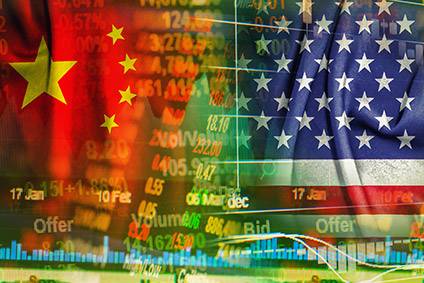
China has hit back at US President Donald Trump with new tariffs on US$60bn of US goods in response to his move yesterday (18 September) to proceed with new duties on an additional US$200bn worth of goods from the East Asian country.
In an announcement posted yesterday, the Office of the Customs Tariff Commission of the State Council said the 5%-10% tariffs will apply to 5,207 items, totalling about $60bn of US goods from 24 September – the same day the US duties will come into effect.

Discover B2B Marketing That Performs
Combine business intelligence and editorial excellence to reach engaged professionals across 36 leading media platforms.
“The US has been willing to go its own way, leading to escalating trade friction between China and the United States,” it said. “In order to defend free trade and the multilateral system and defend its legitimate rights and interests, China has to impose tariff measures on the announced list of about 60 billion US dollars of goods.
“If the US insists on further increasing the tariff rate, the Chinese side will respond accordingly and the relevant matters will be announced separately.”
The latest tariff action will see China place an additional 5% in duty on US products including smaller aircraft, computers and textiles, and an extra 10% on goods such as chemicals, meat, wheat and wine, according to a report published by the BBC.
It comes in response to the news yesterday that President Trump has decided to move forward with a 10% tariff on an additional US$200bn worth of goods from China – a move the US fashion industry says will considerably disrupt the sector’s supply chain.

US Tariffs are shifting - will you react or anticipate?
Don’t let policy changes catch you off guard. Stay proactive with real-time data and expert analysis.
By GlobalDataThe tariffs will take effect on 24 September and will be set at a level of 10% until the end of the year. On 1 January 2019, the tariffs will rise to 25%.
The list contains 5,745 full or partial lines of the original 6,031 tariff lines that were on a proposed list of Chinese imports announced on 10 July. Changes to the proposed list were made after USTR and the interagency Section 301 Committee sought and received comments over a six-week period and testimony during a six-day public hearing in August.
It does, however, still include several fashion and consumer products including leather and fur apparel, hats, backpacks, handbags, and purses, as well as textiles and machinery that are used for domestic manufacturing.
The news has sparked “deep concern” among the US fashion industry and retailers who claim Trump’s tariff action is cruel to American interests – particularly since companies are only being given one week’s notice ahead of the 10% tariff enforcement – and will create “chaos” for the fashion industry’s supply chains.
In its statement, China’s Office of the Customs Tariff Commission of the State Council reiterated that the purpose of implementing the new tariff increase measures is to “curb the escalation of trade frictions”.
“It is a forced response to US unilateralism and trade protectionism,” it added. “China hopes that the US side will stop trade frictions. China and the United States will adopt equality, integrity and pragmatism. Dialogue, mutual respect, and jointly safeguard the overall interests of bilateral economic and trade relations of mutual benefit and win-win, jointly safeguard the principle of free trade and the multilateral trading system, and jointly promote the prosperity and development of the world economy.”





